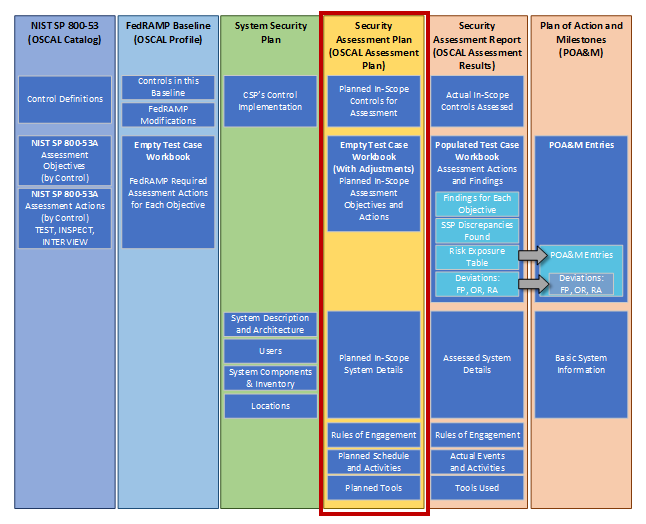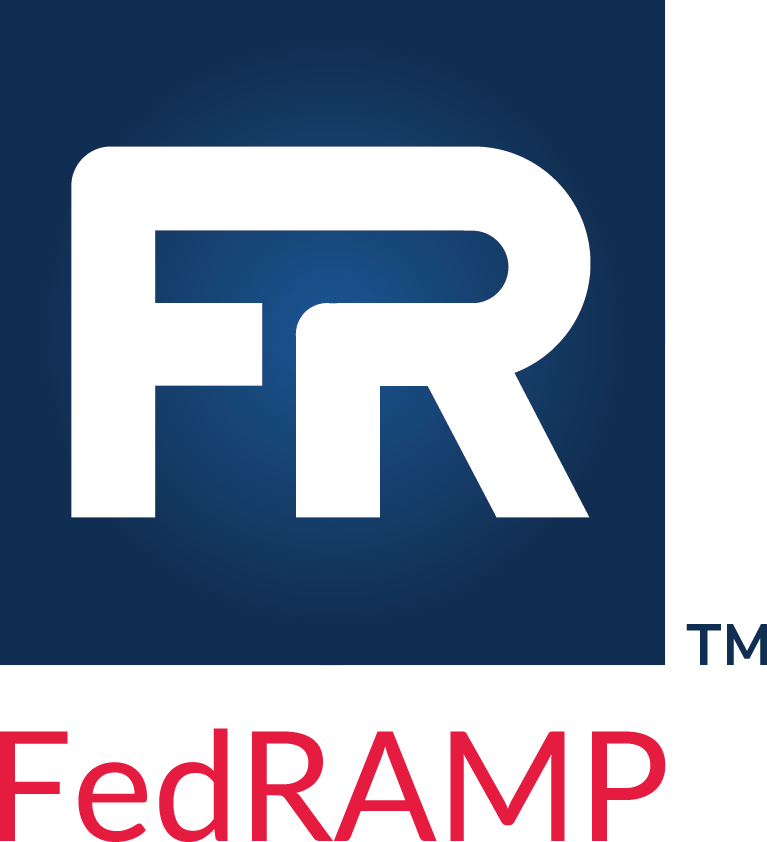FedRAMP OSCAL SAP Overview
This section provides a summary of several important concepts and details that apply to OSCAL-based FedRAMP SAP files.
The FedRAMP OSCAL Documentation provides important concepts necessary for working with any OSCAL-based FedRAMP file. Familiarization with those concepts is important to understanding this documentation.
XML and JSON Formats
The examples provided here are in XML; however, FedRAMP accepts XML or JSON formatted OSCAL-based SAP files. NIST offers a utility that provides lossless conversion of OSCAL-compliant files between XML and JSON in either direction.
You may submit your SAP to FedRAMP using either format. If necessary, FedRAMP tools will convert the files for processing.
SAP File Concepts
Unlike the traditional MS Word-based SSP, SAP, and SAR, the OSCAL-based versions of these files are designed to make information available through linkages, rather than duplicating information. In OSCAL, these linkages are established through import commands.

OSCAL import linkage hierarchy.
For example, the assessment objectives and actions that appear in a blank test case workbook (TCW) are defined in the FedRAMP profile and simply referenced by the SAP and SAR. Only deviations from the TCW are captured in the SAP or SAR.

Detailed overview of OSCAL models.
For this reason, an OSCAL-based SAP points to the OSCAL-based SSP of the system being assessed. Instead of duplicating system details, the OSCAL-based SAP simply points to the SSP content for information such as system description, boundary, users, locations, and inventory items.
The SAP also inherits the SSP’s pointer to the appropriate OSCAL-based FedRAMP Baseline. Through that linkage, the SAP references the assessment objectives and actions typically identified in the FedRAMP TCW.
The only reason to include this content in the SAP is when the assessor documents a deviation from the SSP, Baseline, or TCW.
OSCAL-based FedRAMP SAP Template
FedRAMP offers an OSCAL-based SAP shell file in both XML and JSON formats. This shell contains many of the FedRAMP required standards to help get you started. This documentation is intended to work in concert with that file. The OSCAL-based FedRAMP SAP Template is available in XML and JSON formats here:
-
OSCAL-based FedRAMP SAP Template (JSON Format):
https://github.com/GSA/fedramp-automation/raw/master/dist/content/rev5/templates/sap/json/FedRAMP-SAP-OSCAL-Template.json -
OSCAL-based FedRAMP SAP Template (XML Format):
https://github.com/GSA/fedramp-automation/raw/master/dist/content/rev5/templates/sap/xml/FedRAMP-SAP-OSCAL-Template.xml
OSCAL’s SAP Minimum File Requirements
Every OSCAL-based FedRAMP SAP file must have a minimum set of required fields/assemblies and must follow the OSCAL Assessment Plan model syntax found here:
https://pages.nist.gov/OSCAL/documentation/schema/assessment-layer/assessment-plan/
Importing the System Security Plan
OSCAL is designed for traceability. Because of this, the assessment plan is designed to be linked to the system security plan. Rather than duplicating content from the SSP, the SAP is intended to reference the SSP content itself. If a system security plan is available in OSCAL format, it must be used with the OSCAL-based security assessment plan.
Use the import-ssp field to specify an existing OSCAL-based SSP. The href flag may include any valid uniform resource identifier (URI), including a relative path, absolute path, or URI fragment.
SAP Import Representation
|
|
XPath Queries
|
|
If the value is a URI fragment, such as
#96445439-6ce1-4e22-beae-aa72cfe173d0, the value to the right of the
hashtag (#) is the universally unique identifier (UUID) value of a
resource in the SAP file’s back-matter. Refer to the Citations and Attachments in OSCAL Files section for guidance on handling.
SAP Back Matter Representation
|
|
XPath Queries
|
|
FedRAMP SSPs are delivered by the Cloud Service Provider (CSP), while FedRAMP SAPs are delivered by the assessor. For this reason, FedRAMP strongly encourages the use of relative paths from the OSCAL-based FedRAMP SAP to the OSCAL-based FedRAMP SSP.
Where the provided path is invalid, tool developers should ensure the tool prompts the user for the updated path to the OSCAL-based SSP.
When OSCAL-based SSP Information is Inaccurate
When an assessor encounters inaccurate information in an OSCAL-based SSP, they should encourage the CSP to fix it and use the corrected version of the SSP. The CSP is responsible for all SSP content. An assessor’s tools must not change an SSP.
If an assessor must move forward with inaccurate SSP information, the SAP syntax allows for SSP information correction. Performing these corrections in the SAP instead of the SSP ensures the corrected content is clearly attributed to the assessor.
Tool designers should ensure their tools can cite the relevant OSCAL-based SSP information when possible and capture assessor-corrected SSP information in the SAP’s local-definitions or metadata sections when necessary. The relevant sections of this guide describe how to represent inaccurate SSP information in the SAP when needed.
If No OSCAL-based SSP Exists (General)
The OSCAL-based SAP must always have an import-ssp field, even if no
OSCAL-based SSP is available. To compensate for this, use a URI fragment
that points to a resource in the back-matter. The resource must have a
type property with the value of no-oscal-ssp.
SAP Representation
|
|
XPath Queries
|
|
The system’s authorization date, purpose, and description have not historically been displayed in the SAP but must be present in the SAP for the SAR to reference.
Include the system name in the title field, and the system description
in the description field. Add FedRAMP Extension properties to capture
the system’s short name as title-short, FedRAMP-assigned system
identifier as system-id and describe the system’s purpose in
purpose.
Also include the import-profile extension and supply either a URI to
the profile externally or a URI fragment with the UUID of the SAP
resource containing the relevant profile details.
In addition to defining the system here, SAP tools must place other
relevant SSP information in the SAP’s metadata and local-definitions
section as needed for the SAP to reference this information, essentially
treating all relevant SSP content as missing from an OSCAL
perspective.
The relevant sections of this guide describe how to represent missing SSP information in the SAP when needed.
Resolution Resource Prop
FedRAMP will be implementing a separate set of automated SAP validation rules for the rev 5 OSCAL templates. To ensure FedRAMP initiates the appropriate validation rules when processing OSCAL SAPs, SAP authors should add a new prop called “resolution-resource” in the metadata section and include an associated back-matter resource as shown below:
SSP Resolution Resource Representation
|
|
XPath Queries
|
|
If the “resolution-resource” prop is not specified in the metadata section of the SAP, FedRAMP will assume the SAP should be validated using the rev 5 validation rules. If the “resolution-resource” prop is present, FedRAMP will use the validation rules that correspond with the version specified in the back-matter resource.


